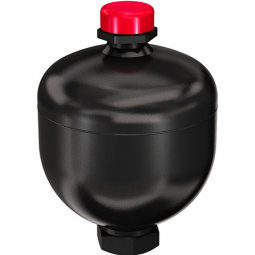Бренды
Diaphragm type accumulators HAD
Diaphragm type accumulators HAD
-
Component series 1X and 2X
-
Nominal capacity 0.075 … 3.5 l
-
Maximum operating pressure 350 bar
|
Nominal capacity |
l |
0.075 | 0.16 | 0.35 | 0.5 | 0.7 | 1 | 1.4 | 2 | 2.8 | 3.5 |
|
Weight |
kg |
0.65 | 1 | 1.3 | 1.6 | 2.6 | 3.5 | 4.9 | 4 | 5.5 | 14 |
|
kg |
— | — | — | 2 | 3.2 | — | 6.2 | 9.5 | 10 | — | |
|
Design |
Diaphragm type accumulator, welded | ||||||||||
|
Installation position |
Any, preferably with the fluid connection socket at the bottom | ||||||||||
|
Mounting type |
with clamps or via stud end connectors | ||||||||||
|
Ambient temperature range 1) |
°C |
-15 … +65 | |||||||||
|
Line connection |
Screw-in thread | ||||||||||
1) The admissible temperature range specified in the tank test is also decisive
Function, section, symbol
General information
One of the main tasks of hydraulic accumulators is e.g. to accept certain volumes of pressurized liquids of a hydraulic system and to return them to the system if required.
As the liquid is pressurized, the hydraulic accumulators are treated like pressure vessel and must be designed for the max. operating overpressure considering the acceptance standards of the country of installation.
In most hydraulic systems, hydro-pneumatic (gas-charged) accumulators with separator element are used.
The difference between bladder, piston and diaphragm type accumulators lies in the type of separator element.
Hydraulic accumulators essentially consist of a fluid section and a gas section with a gas-tight separator element. The fluid section has a connection to the hydraulic circuit. During the pressure increase, the gas is compressed and liquid accepted in the hydraulic accumulator. When the pressure decreases, the compressed gas expands and displaces the accumulated fluid into the circuit.
Diaphragm type accumulator
Diaphragm type accumulators consist of a pressure-resistant steel vessel (1) which most commonly has a spherical to cylindrical form. Inside the accumulator, there is the separator element, namely a diaphragm (2) made of an elastic, flexible material (elastomer) with the closing button (3) and the plug screw (4). They correspond to directive 97/23/EC.















